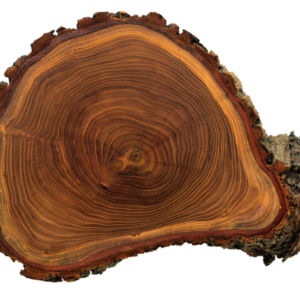Special Issue: Water Narratives
24 December 2025
Published online 17 May 2015
Climate change has caused trees to increase the carbon concentration within their cells to adapt to rapid changes

David Frank of the Swiss Federal Research Institute WSL and his colleagues collected long-term tree ring data from important broadleaf and coniferous species in Europe’s forests. They then looked at changes in intracellular carbon-13 concentration to reconstruct the physiological responses of the forests to anthropogenic climate change.
They found that intercellular carbon concentration in trees across Europe increased by an average of 0.76 parts per million by volume (p.p.m.v.) for every p.p.m.v. increase in atmospheric carbon concentration.
Atmospheric carbon concentrations increased by about 70 p.p.m.v. during the 20th century, corresponding to a simultaneous 44 p.p.m.v. increase in the trees’ carbon-13 concentration, consistent with the idea that trees alter their physiology in order to maintain a constant ratio of atmospheric to intercellular carbon.
“One of the key messages of this study is how small leaf-scale processes can have a significant impact on the flow of water and energy,” says Frank. “We expected [to see] a decrease in the land-atmosphere water vapour flux [but] instead we found that transpiration actually increased during the 20th century.”
“Transpiration cools plants and the land surface, but can also increase the temperature as water vapour is a powerful greenhouse gas, [so] this is a topic for more research,” he adds.
doi:10.1038/nmiddleeast.2015.84
Stay connected: